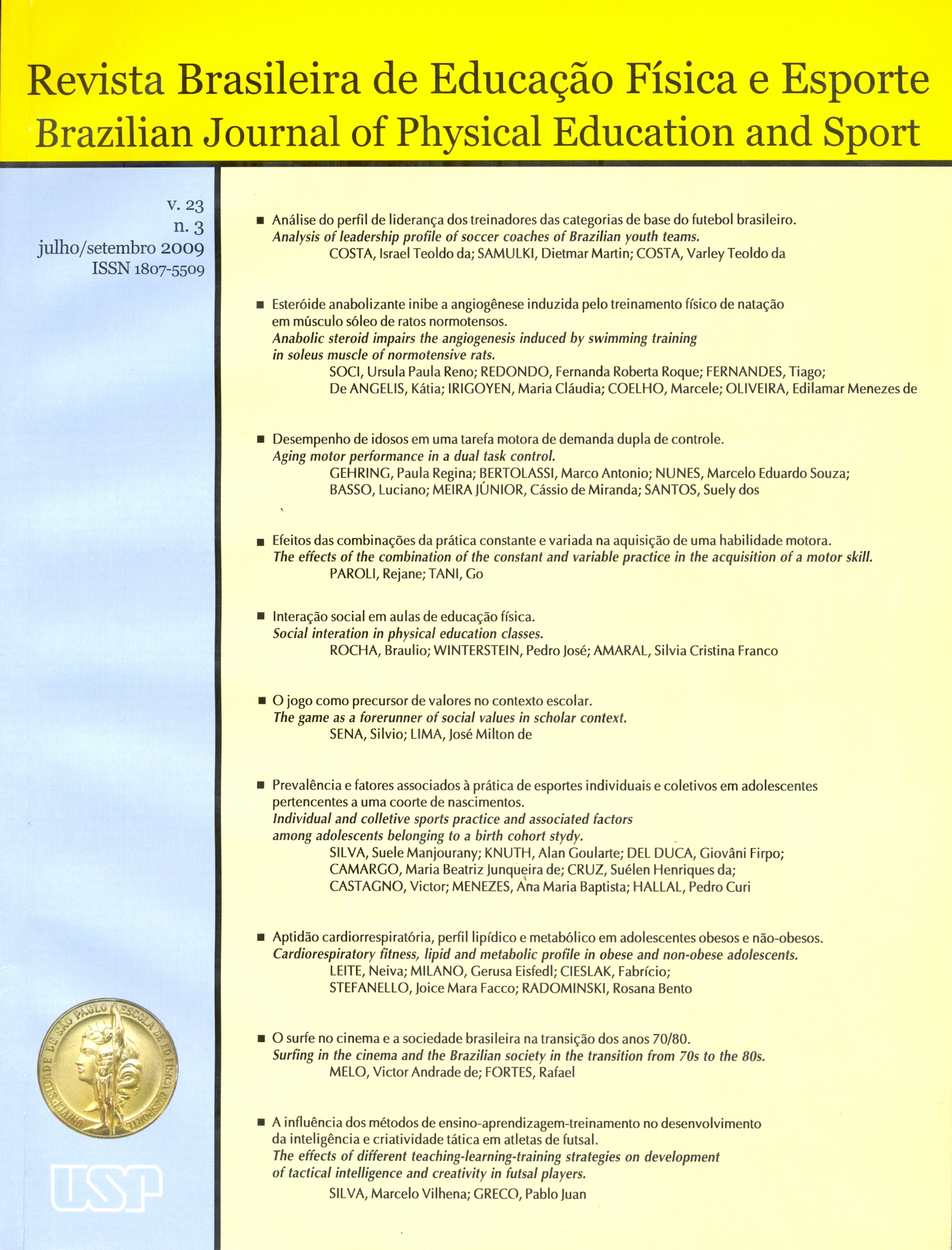Interação social em aulas de educação física
DOI:
https://doi.org/10.1590/S1807-55092009000300005Palavras-chave:
Educação física, Interação social, InternalizaçãoResumo
O estudo analisou formas de interação social que ocorrem durante a prática de jogos infantis. A perspectiva histórico-cultural, em especial as contribuições de Vigotski, foi o fundamento teórico para pensarmos a interação social. A pesquisa, caracterizada como observação participante, foi realizada com crianças de nove a 11 anos. A proposta de condução das aulas pautou-se nas aulas abertas, procurando incentivar as crianças a modificarem as regras dos jogos, permitindo que houvesse uma maior chance de interação entre as mesmas. Os dados obtidos no trabalho de campo foram categorizados em três esferas situacionais: participação, atividade e relacionamento. A partir da análise destas esferas é possível afirmar que é no contato entre indivíduos no ambiente educacional, de forma ativa e comprometida, que a interação social ocorre efetivamente de maneira mais interessante, pois exigem dos alunos atitudes que respondam aos problemas e divergências evidenciados entre eles, muitas vezes, sem a imposição do adulto.Downloads
Os dados de download ainda não estão disponíveis.
Downloads
Publicado
2009-09-01
Edição
Seção
naodefinida
Licença
Todo o conteúdo da revista, exceto onde está identificado, está licenciado sob uma Licença Creative Commons (CC-BY)
Como Citar
Rocha, B., Winterstein, P. J., & Amaral, S. C. F. (2009). Interação social em aulas de educação física . Revista Brasileira De Educação Física E Esporte, 23(3), 235-245. https://doi.org/10.1590/S1807-55092009000300005


